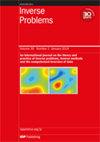MiPhDUO: microwave imaging via physics-informed deep unrolled optimization
IF 2
2区 数学
Q1 MATHEMATICS, APPLIED
引用次数: 0
Abstract
Microwave imaging (MWI) is a non-invasive technique that can identify unknown scatterer objects’ features while offering advantages such as low cost and portable devices with respect to other imaging methods. However, MWI faces challenges in solving the underlying inverse scattering problem, which involves recovering target properties from its scattered fields. Existing methods include linearized and non-linear optimization approaches, but they have limitations respectively in terms of range of validity and computational complexity (in view of the possible occurrence of ‘false solutions’). In recent years, learning-based approaches have emerged as they can allow real-time imaging but usually lack generalizability and a direct connection to the underlying physics. This paper proposes a physics-informed approach that combines convolutional neural networks with physics-based calculations. It is based on a few cascaded operations, making use of the gradient of the relevant cost function, and successively improving the estimation of the unknown target. The proposed approach is assessed using simulated as well as experimental Fresnel data. The results show that the integration of physics with deep learning can contribute to improve reconstruction accuracy, generalizability, and computational efficiency in MWI.MiPhDUO:通过物理信息深度展开优化进行微波成像
微波成像(MWI)是一种非侵入式技术,可以识别未知散射物体的特征,与其他成像方法相比具有成本低、设备便携等优点。然而,微波成像在解决基本的反向散射问题时面临挑战,该问题涉及从散射场恢复目标属性。现有的方法包括线性化和非线性优化方法,但它们在有效性范围和计算复杂性(考虑到可能出现的 "错误解")方面各有局限。近年来,出现了基于学习的方法,因为它们可以实现实时成像,但通常缺乏通用性和与底层物理的直接联系。本文提出了一种基于物理学的方法,它将卷积神经网络与基于物理学的计算相结合。它基于一些级联操作,利用相关成本函数的梯度,连续改进对未知目标的估计。利用模拟和实验菲涅尔数据对所提出的方法进行了评估。结果表明,将物理学与深度学习相结合,有助于提高 MWI 的重建精度、通用性和计算效率。
本文章由计算机程序翻译,如有差异,请以英文原文为准。
求助全文
约1分钟内获得全文
求助全文
来源期刊

Inverse Problems
数学-物理:数学物理
CiteScore
4.40
自引率
14.30%
发文量
115
审稿时长
2.3 months
期刊介绍:
An interdisciplinary journal combining mathematical and experimental papers on inverse problems with theoretical, numerical and practical approaches to their solution.
As well as applied mathematicians, physical scientists and engineers, the readership includes those working in geophysics, radar, optics, biology, acoustics, communication theory, signal processing and imaging, among others.
The emphasis is on publishing original contributions to methods of solving mathematical, physical and applied problems. To be publishable in this journal, papers must meet the highest standards of scientific quality, contain significant and original new science and should present substantial advancement in the field. Due to the broad scope of the journal, we require that authors provide sufficient introductory material to appeal to the wide readership and that articles which are not explicitly applied include a discussion of possible applications.
 求助内容:
求助内容: 应助结果提醒方式:
应助结果提醒方式:


